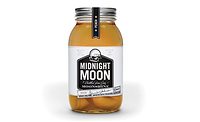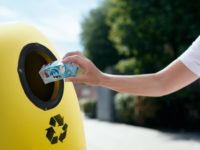Cartons hit on sustainability, convenience trends
More beverage brands embracing carton packaging

As emerging trends of yesteryear mature, the qualities that brought that sensation to the forefront might exhibit a refinement deepening its appeal. One such attribute that exhibited this evolution is convenience throughout the food and beverage market. In fact, Chicago-based Mintel named Elevated Convenience as one of its trends to watch for 2019.
“[W]e predict the rising segment of consumers who are often on-the-go, yet want to spend more time at home will increase demand for upscale, ‘speed scratch’ solutions and restaurant-quality, ready-to-consume products,” said Jenny Zegler, associate director of Mintel Food & Drink, in a statement at the time of their release. “As meal kits and foodservice-inspired beverages lead the way, there will also be more opportunities for brands to develop healthy, flavorful, customizable, and quick premium convenience products for breakfast, lunch, dinner, snacks and dessert occasions.”
As beverage-makers look to design upscale, convenient products for consumers’ busy lives, packaging suppliers are navigating the path to amalgam these attributes.
“Consumption occasion rules more than ever,” says Pedro Goncalves, vice president of marketing for the U.S. and Canada at Tetra Pak, Vernon Hills, Ill. “In the past, we had this idea that consumers had to fit their nutritional and health needs into the available consumption occasions, like breakfast, lunch and dinner. But nowadays this concept is defunct thanks to a huge shift in lifestyles where people are more active outside the home and more on top of their health needs.
“This new consumer is much more aware of his or her nutritional and health needs like protein intake, hydration and overall nutrition — all with a long-term commitment,” he continues. “This movement gives space to trends like keto diets and other lifestyle shifts. With a more active lifestyle also comes a constraint: time to prepare these nutritious meals. With this, the trend toward ready-made meal replacements, protein shakes and other products to take outside home will only grow.”
Goncalves highlights that packaging materials like cartons are fulfilling the need for a portable package while protecting the efficacy of the liquid inside.
“The carton package is highly suited for sensitive products that can spoil quickly,” he explains. “Such products often have robust nutritional properties like high-protein beverages, milk, plant-based beverages and natural juices. The aseptic technology used to process and pack products in carton packages is perfect to ensure protection and safety without the need for preservatives or refrigeration.
“This allows for long shelf life without compromising on flavor and still being economically feasible with a very low carbon footprint,” he continues. “However, we also see acceleration of carton packages adoption in categories like water especially.”
A planet perspective
As noted above, carbon footprint not only is top of mind for consumers but also packaging suppliers.
“The impact of sustainability on beverage packaging is tremendous,” Goncalves says. “There are already a number of initiatives in place to improve the sustainability of beverage packaging, but there is still work to be done to ensure we’re looking beyond recycling and reuse to include the carbon impact of raw materials and manufacturing.
“As an industry, we have accelerated investments in those areas and we see positive momentum towards some real change,” he continues. “At Tetra Pak, we are taking several actions including working to build a circular portfolio through our updated portfolio strategy, which focuses on renewable packaging, sustainable openings, recycled content and ensuring we design with recyclability in mind.”
Packaging suppliers note that an increasing number of beverage brands are acknowledging the environmental benefits of carton packaging and thereby making the switch.
For example, Evergreen Packaging, Memphis, Tenn., and New Barn Organics, Healdsburg, Calif., announced in March that New Barn Organics is transitioning its Almond Milk line, previously packaged in plastic, to Evergreen’s PlantCarton paper packaging.
“At New Barn Organics, we are dedicated to organic and the environmental responsibility that comes with it,” said Ted Robb, chief executive officer of New Barn Organics, in a statement. “We heard clearly from our customers that a transition to plant-based packaging versus petroleum-based packaging is right for our brand and right for our products. And since a key premise of our business is to be transparent with our ingredients and sourcing decisions, we are dedicating space on a panel of the cartons to the PlantCarton story.”
All of Evergreen’s PlantCarton packages are made with at least 70 percent renewable material; paper made from trees where responsible forestry practices are used, the company says. PlantCarton packaging also is recyclable.
Most recently, SIG, Neuhausen, Switzerland, and Maple Hill, Kinderhook, N.Y., announced that the organic milk brand now is available in shelf-stable, single-serve cartons. Mainly made from wood, a renewable raw material, the combismile carton is approved to bear the label of the FSC (Forest Stewardship Council), SIG says. This confirms that the wood fibers used to manufacture the raw paperboard came from responsibly managed, FSC-certified and other controlled sources, it adds. Instead of a straw, the package features a reclosable cap with a single-action, leak-proof and tamper evident spout. After use, the packages are 100 percent recyclable, the company says.
“There has not been an innovation in shelf-stable milk for years. For the first time ever, consumers will be able to get 100 percent grass-fed whole milk and chocolate milk on the shelf and in eco-friendly packaging,” said Carl Gerlach, president and chief executive officer of Maple Hill, in a statement. “SIG has been an integral partner in bringing this product to the market in the right way.”
Although an increasing number of brands are recognizing the environmental benefits of cartons, challenges still remain regarding its recyclability perception.
“One big challenge we face is that there is a misconception that cartons are not recyclable,” Tetra Pak’s Goncalves says. “But access to carton recycling has grown over 240 percent since 2009 when we, along with other carton manufacturers, came together to form the Carton Council. Through Carton Council, we work to increase the number of U.S. households that can recycle cartons through curbside and drop-off programs.
“At last count, 62 percent of U.S. households had access to carton recycling — but the work is far from done,” he continues. “Tetra Pak is committed to further increasing both access to and participation in carton recycling, working via the Carton Council to enhance recycling infrastructure with new technology like sorting robots, educating consumers on recycling and working across the recycling value chain.”
However, Tetra Pak is up for the challenge to further the education of cartons’ recyclability as well as improve on cartons’ performance.
“With growing demands on sustainability, we see a lot of innovation in the future of beverage packaging,” Goncalves says. “On this front, Tetra Pak has made a commitment that our packages will be made solely from plant-based or recycled packaging materials, recyclable, fitting to a low-carbon circular economy without ever compromising on food safety requirements. To move closer to this ambition, we have an updated portfolio strategy, which focuses on renewable packaging, sustainable openings, recycled content and enabling recycling by design.” BI
Looking for a reprint of this article?
From high-res PDFs to custom plaques, order your copy today!







